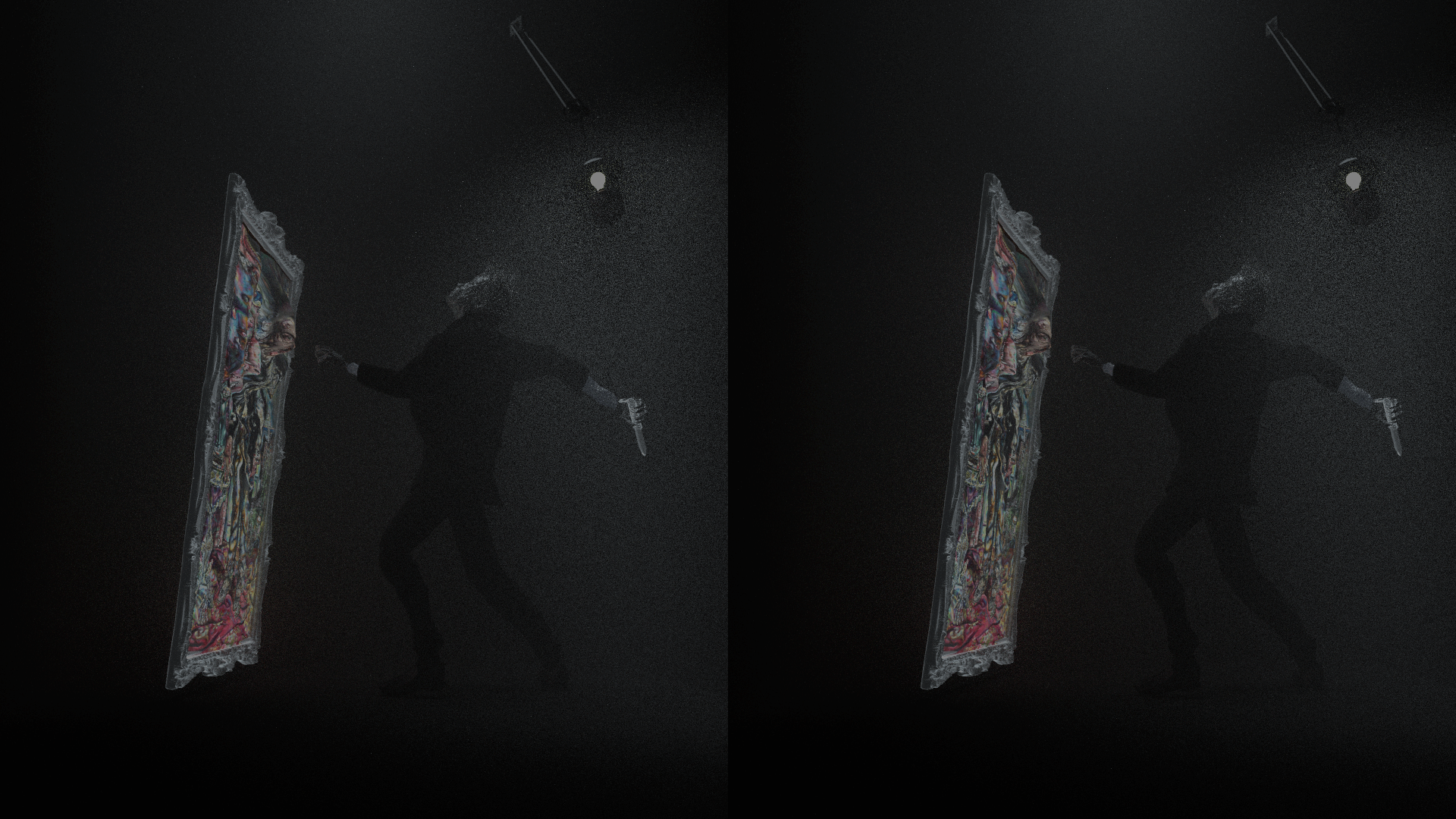SUBSTRATE
SUBSTRATE
an underlying substance or layer.
- the surface or material on or from which an organism lives, grows, or obtains its nourishment.
- the substance on which an enzyme acts.
A substrate functions dually as active sustenance for living organisms and passive surface to be acted (i.e: painted) upon. Casting unreliable substrates as supporting actors for the subjects they are meant to uphold, these time-based works reinterpret the relationship between subjecthood and support structure with the addition of a digital container and its attendant witness. The substrate, alive and pulsing between its conflicting definitions, grounds the the taken-for-granted stability of future viewership inherent to representation to the biological singularity and uncertainty of the represented subject.
POLAR BEAR. 2019
Polar Bear. 2019. HD Video. 66 seconds.
Image Description: A medium close-up fixed position video shot using a built-in laptop camera. A chunk of ice rests on an easel in the middle of the screen. From screen left a polar bear arm holding a paintbrush rigorously paints the block of ice. The video is sped up to show the rapid melting of the acrylic paint as it lands on the surface and then cascades downward with the melting water. There are brief moments where we see the representational image of a polar bear on the ice before it drips away
Polar Bear is a laptop camera-recorded video of a polar bear, the unwitting mascot of climate catastrophe, desperately trying to paint and maintain its self portrait on a melting block of ice. The polar bear is a culturally located visual symbol for the largely invisible and/or masked human operations causing climate devastation. I granted the polar bear the absurd agency to paint and record itself with some degree of realism, as if marking its territory in the neoliberal world of stark individualism, but offered it no stable surface for these skills to translate to anything other than diluted pools of pigment. The video makes a visual spectacle of its battle with the limits of fixed visual representation. This performance has continued to raise questions for me about how to make work that uses visual representation and its limits as a catalyst for inventive forms of sustained empathy and engagement.
ACTUAL AGE. 2018
Actual Age. 2018. 4K Video Object. 65 seconds on loop.
Image Description: A silent video object on continuous loop in which a large, vertically oriented monitor rests on the floor in a dark room. The video is a fixed camera position, medium-wide 3D animation of a figure; supposedly Mona Lisa as a 500 year-old (her approximate age if she were still alive) turning slightly towards and away from the camera. There is a thin veil dangling from her head like cobwebs. She is in a sterile medical environment, hunched over on a medical exam table. The outer edges of the video are a taken up by a virtual gold frame.
Someone told me once that the Louvre paints the room where La Giaconda (The Mona Lisa) hangs a deeper hue of yellow every year to offset the yellowing of the famous work (the room is now painted blue). True or not, the anecdote spoke to me about the lengths an institution might go to in order to preserve an impossible image of good health. The Mona Lisa works for the Louvre. Actual Age plays with the familiar impulse to personify the painting as a departure point to imagine the subject of the Mona Lisa at her actual age in 2018, waiting to be seen for surgical intervention.
MIDLIFE CRISIS. 2020

Still (Brightened for internet preview) Midlife Crisis. 2020. Stereoscopic Video. 76 seconds on loop.
Image Description: A right eye, left eye split image of a white middle aged man in a black suit hunched over with a knife that tears lightly through a full-sized self portrait. A lamp lights the otherwise dark scene in the top right corner.
This work offers a peephole into a small blank room lit only by a swaying gas lamp where Oscar Wilde’s infamous fictional character Dorian Gray, known for attempting to cast his human mortality onto a portrait of himself, slowly and pathetically stabs at the painting. Unmarred by the attempts, the painting gently ripples and envelops the knife. While the original narrative concludes with a full download of mortality and depravity from canvas to human, this stereographic work suspends the transfer indefinitely, allowing a listless life force to hover within the scene. The audio heard faintly from within the room is a song called “Goodbye Little Yellow Bird” sung by the Angela Lansbury in the 1945 American film adaptation of the novel. The original portrait I sampled for this piece was also commissioned for the 1945 film and painted by Ivan Albright.
Exhibitions:
-
Future Timelike Infinity. Carnation Contemporary. Portland, OR
-
Work. Korn Gallery at Drew University. Madison, NJ
-
Like a Day. 21 Ludlow. New York, NY
-
Just Honey. Mason Gross Gallery. Rutgers First Year MFA Exhibition. New Brunswick, NJ